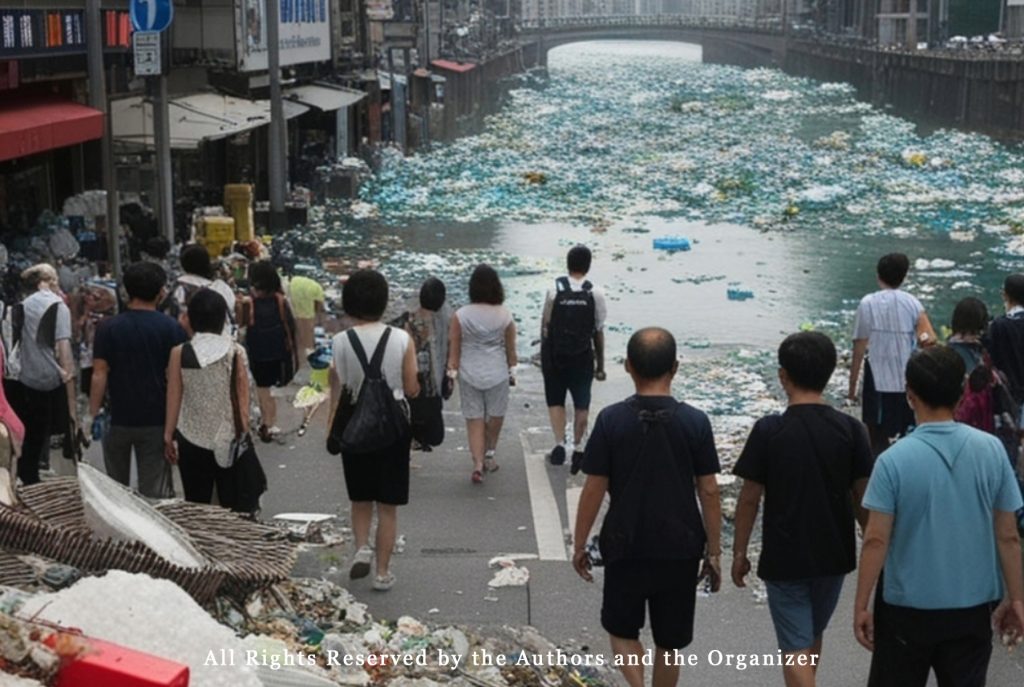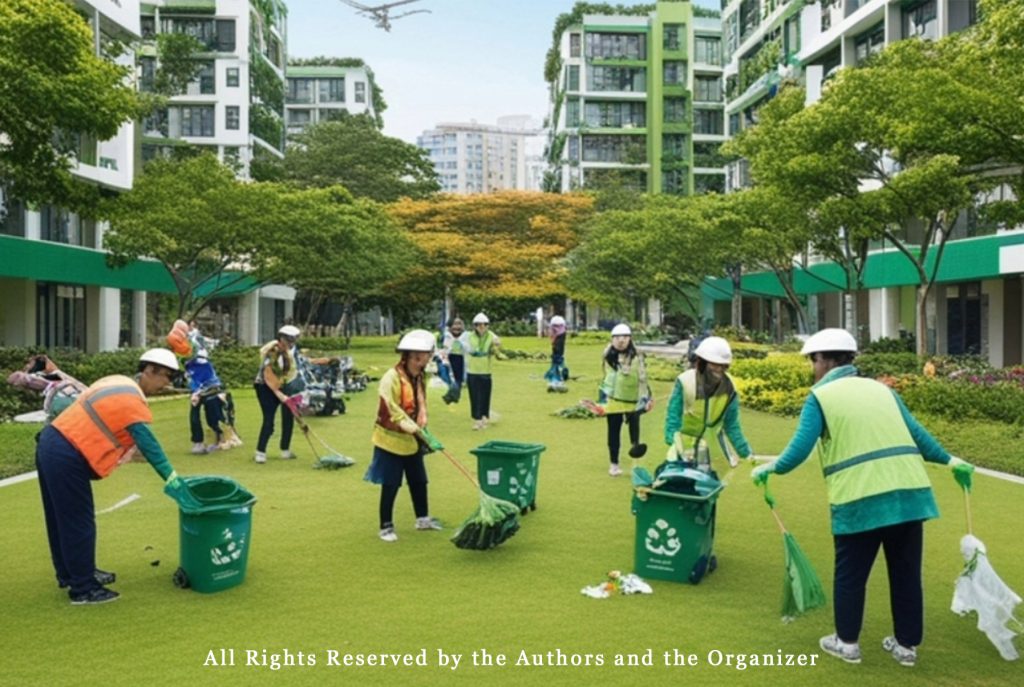「臺灣文化與永續發展:第二屆AI視覺創作之明信片設計競賽」
佳作展示
「環境保護」
作品介紹


佳作
生成式AI–徐侯仁
指導老師:陳建宏老師
中華大學 資訊工程學系
作品英文描述
This artwork juxtaposes two contrasting scenes, offering a powerful commentary on Taiwan’s environmental challenges. On one side, a vibrant, eco-friendly community park showcases residents actively engaged in recycling and environmental cleanup, embodying the commitment to sustainable living. Surrounding the park are buildings powered by green energy, with designs that harmonize with the natural environment, creating a vision of a cleaner, greener future. This scene highlights the collective responsibility for maintaining a zero-waste lifestyle and promoting eco-conscious behavior.
In stark contrast, the other side depicts a crowded city street overwhelmed with plastic waste, disposable items, and pollution scattered along the sidewalks. People walk past, seemingly indifferent to the accumulating litter, while a river clogged with plastic waste winds through the urban landscape. This scene reflects the troubling apathy toward environmental degradation and the harmful effects of excessive consumption and single-use culture.
Together, these contrasting images urge viewers to reflect on Taiwan’s urgent environmental crisis. The piece calls for a shift toward more sustainable practices, emphasizing the importance of individual and collective responsibility in protecting the environment. Through this work, the artist highlights the need for balance—where environmental stewardship and sustainable development are prioritized to ensure a cleaner, more harmonious future for both people and nature.
創作動機
The motivation behind this artwork stems from a deep concern for the environmental issues facing Taiwan and the world. With the rapid pace of urbanization and the spread of consumer culture, plastic waste and disposable items have become a growing threat to the natural environment. The piece aims to contrast two starkly different scenes to encourage viewers to reflect on the current environmental crisis and consider how they can change their lifestyles.
On one side, the artwork portrays an idealized scene where people are actively engaged in environmental cleanup and recycling, symbolizing the hope for a sustainable future. This side represents the commitment to eco-conscious living, where individuals and communities work together for the planet’s well-being. On the other side, the crowded city street filled with plastic waste and pollution highlights the harsh reality of overconsumption and a lack of environmental awareness. This contrast serves to underscore the urgency for change.
The underlying motivation of the artwork is to inspire greater environmental awareness and action, urging viewers to recognize the importance of sustainable practices. It calls for collective responsibility, from individual actions to societal efforts, in promoting sustainability and creating a cleaner, greener world. Through this work, the artist hopes to spark a broader conversation about how we can build a more eco-conscious future for all.
心得與反思
This artwork has deeply impacted me, provoking a sense of urgency and responsibility regarding the environmental issues we face today. The contrast between the two scenes—one filled with hope and collective action, the other drowning in waste and apathy—was striking. It reminded me of how crucial it is to actively engage in sustainable practices, not just as individuals, but as a society. The idealized scene of recycling and environmental cleanup painted a hopeful vision of the future, one where people are working together for the planet’s well-being. On the other hand, the chaotic, polluted city street served as a sobering reminder of the consequences of overconsumption and the disregard for environmental health.
Reflecting on the piece, I realized how easy it is to become complacent in our daily lives, unaware of the cumulative impact of small actions like excessive plastic use. It made me reflect on my own habits and how I can contribute to positive change, whether through reducing waste, supporting eco-friendly initiatives, or raising awareness within my community. This work has reinforced the importance of collective responsibility and reminded me that real change begins with each of us taking action in our daily lives. It’s a call to not only reflect but also to act before it’s too late.
